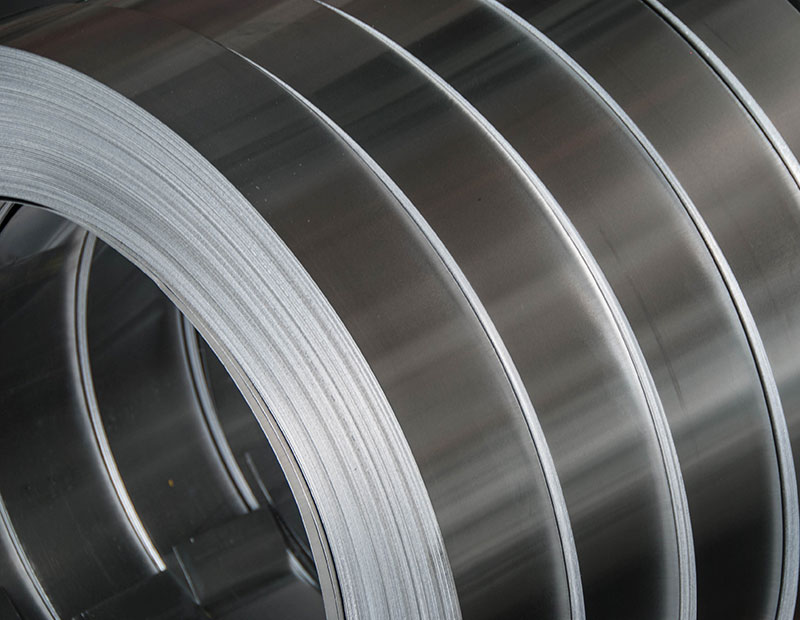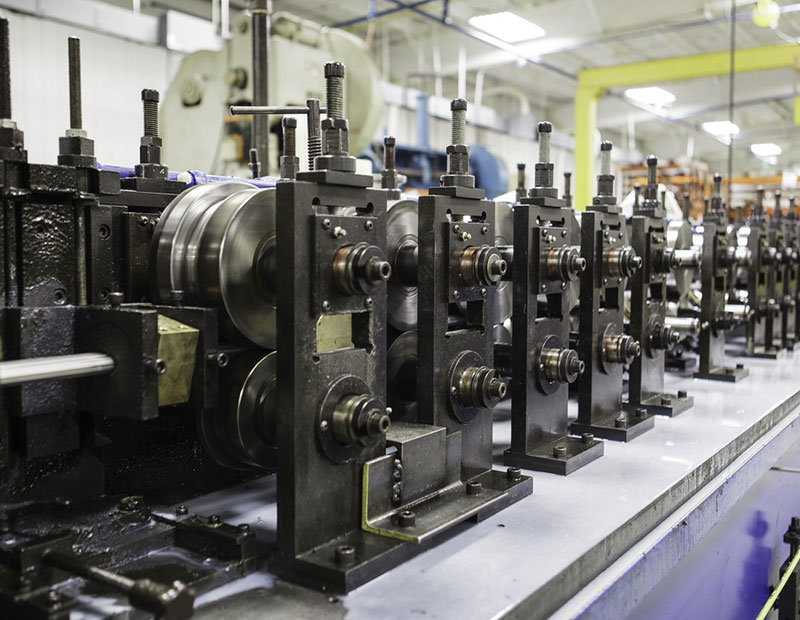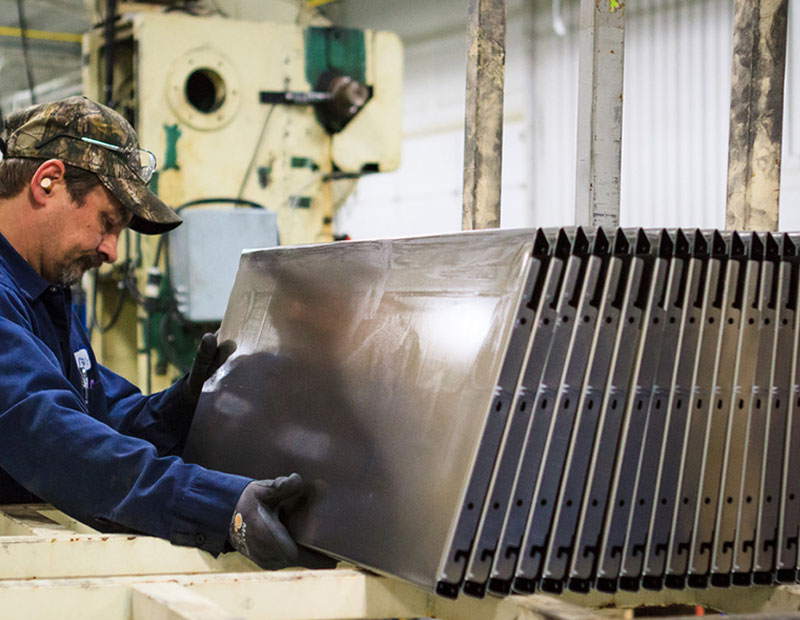Metal Forming Process
Roll forming is a continuous shaping operation, ideal for making components with a consistent profile running the entire length of the part, in which coiled sheet metal is passed through a horizontal series of rotating dies to produce a uniform cross-section shape. Each set of rolling dies makes an incremental change to the sheet metal until the desired profile is achieved. The resulting piece is then cut to the specified length of the final part.
The benefits of using a roll forming process versus a press brake or other bending operation can be seen in cost reduction, quality, and consistency of parts. Cost reduction comes into play simply due to the speed and continuity of the operation which allows for higher volumes at lower costs. Actions such as notching, perforating and punching can be incorporated into the dies reducing or eliminating the need for secondary operations.
In typical bending operations, you are limited by the length of your press brake, whereas in roll forming the length of a part is almost limitless. We can also assist with an array of additional operations such as welding, stamping and assembly, and can even provide inventory management and logistics services.
View our video, which demonstrates how the desired shape forms gradually. The material begins as a flat coil and each pair of rolls adds shape and structure to the end product.
Steel Forming Systems
Better. Value. Faster.
Materials & Mills
Steel Forming Systems can roll form many types of material, including mild carbon steel, high-strength steel, stainless steel, pre-painted steel, PVC coated steel, aluminum, and copper, and can accommodate material thicknesses up to 11GA (3.3mm).
We house large capacity roll forming mills and over 30 in-line presses, providing great flexibility. The presses can be rearranged in many different configurations along with a variety of in-line mills.
Our large collection of non-proprietary tooling is available for more generic parts, eliminating upfront costs. Simple profiles, such as angles, u-channels and c-channels can often be produced without out the necessity of making new tooling.













